In this section the current noise spectral densities of the diodes are shown and some tentative interpretations of the results are proposed.
At zero bias the measured noise is the thermal
noise of both the feedback resistor and the diode. From equation
(4) the
equivalent noise resistances of the diodes
were found which with the use of the diode dimensions enabled resistivities for
the material
of 12.4M ![]() cm and 18.3M
cm and 18.3M ![]() cm to be obtained. Both values are of the
correct order of magnitude.
cm to be obtained. Both values are of the
correct order of magnitude.
Figure 4 shows a typical noise spectrum. All the spectra are white at frequencies above the corner frequency of the excess noise. The value of the current noise density is less that that expected from equation (9). At a frequency of 10kHz the noise over the measured leakage current range is between 1.7 and 2.3 times less than the simple shot noise theory. At frequencies between 20kHz and 30kHz there is a corner in the white noise.
If the leakage current is due to the thermionic emission of carriers over the
Schottky barrier then the noise should be shot noise. A simple model can be
devised
to explain the shot noise spectra obtained, with reference to equation
(9) and figure 3.
One can say that if an
electron is trapped and at a later instant released then this electron will
produce two
pulses of charge whose sum is equal to e. If
the electron is captured after producing a charge pulse equal to ![]() in the external
circuit and then released, on average
the frequency of charge pulses produced by the emitted electrons is doubled
while the charge is halved. The shot
noise spectral density is thus reduced by a factor of two.
Shot noise should be white due to the fast transit time of the electrons across
the high field region behind the reversed biased
Schottky junction, however, this is not observed. The corner frequency at 30kHz
can be explained with reference to the condition imposed that
charge neutrality is obtained in a time
given by the dielectric relaxation time. Assuming that the noise source is
Lorentzian, the corner frequency
corresponds to the reciprocal of this time constant. Thus a lifetime of the
order of
10-5s is required, which is equivalent to the dielectric relaxation time in
SIU-GaAs.
in the external
circuit and then released, on average
the frequency of charge pulses produced by the emitted electrons is doubled
while the charge is halved. The shot
noise spectral density is thus reduced by a factor of two.
Shot noise should be white due to the fast transit time of the electrons across
the high field region behind the reversed biased
Schottky junction, however, this is not observed. The corner frequency at 30kHz
can be explained with reference to the condition imposed that
charge neutrality is obtained in a time
given by the dielectric relaxation time. Assuming that the noise source is
Lorentzian, the corner frequency
corresponds to the reciprocal of this time constant. Thus a lifetime of the
order of
10-5s is required, which is equivalent to the dielectric relaxation time in
SIU-GaAs.
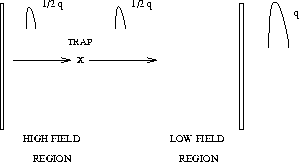
Figure 3: Simple model for shot noise.
If the major contribution to the reverse bias leakage current is the generation
current, rather than the injection of carriers over
the Schottky barrier then the noise is due to
generation-recombination noise from the bulk and not thermionic emission at the
barrier. The noise due to generation has a
characteristic time constant, the lifetime of the generated electron in the
conduction band, which is inversely proportional to the corner frequency of the
spectrum.
If the transport mechanism is said to be by relaxation processes then the
lifetime, ![]() in equation
(10), is the dielectric relaxation time.
Although, in principle, the dependence of the measured spectral density on the
leakage current should help separate the two causes of the white noise,
no clear dependence was observed.
in equation
(10), is the dielectric relaxation time.
Although, in principle, the dependence of the measured spectral density on the
leakage current should help separate the two causes of the white noise,
no clear dependence was observed.
The final part of the diode noise spectrum is the low frequency excess noise. This is seen for measurements made on the small diode for currents up to 70nA (75V bias) as approximately 1/f noise which meets the white noise at a frequency of 500Hz. At 10Hz the excess noise is an order of magnitude greater than the white noise component of the spectrum. This is also observed in the large diode for currents up to 170nA (50V bias).
At larger currents (above 71nA for the small diode) a second low frequency
noise component appears which has a much steeper
frequency dependence, ![]() where
where ![]() is close to 3.
At 10Hz the excess noise is now almost two orders of magnitude larger than the
white noise.
(figure 5).
is close to 3.
At 10Hz the excess noise is now almost two orders of magnitude larger than the
white noise.
(figure 5).
The magnitude of the excess noise is seen to increase with bias towards the
`breakdown' of the diode. Here the corner frequency of the excess noise extends
to much higher frequencies; 1kHz @ 230V, and
>100kHz @ 240V for the small diode. The magnitude of the noise increases
dramatically, to reach 3 ![]() 10-21 A2/Hz at 10Hz
at 230V for the small diode (see figures 6 and 7). At a
bias of 200V the electric field extends
across the sample to the forward biased contact
which causes charge injection and thus the dramatic increase in the measured
noise which occurred between 230V and
240V.
10-21 A2/Hz at 10Hz
at 230V for the small diode (see figures 6 and 7). At a
bias of 200V the electric field extends
across the sample to the forward biased contact
which causes charge injection and thus the dramatic increase in the measured
noise which occurred between 230V and
240V.
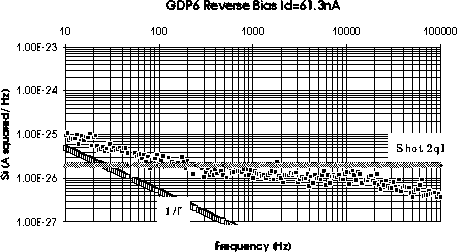
Figure 4: Typical noise spectrum of the small GaAs diode under reverse bias
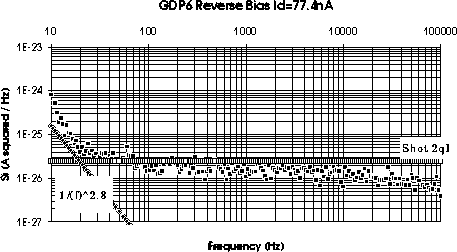
Figure 5: Spectrum showing the steep frequency dependence of the excess noise.
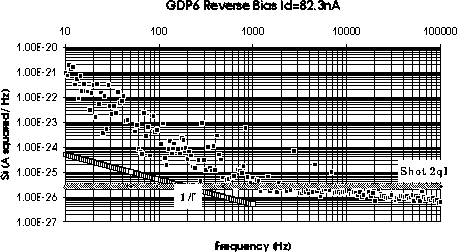
Figure 6: Noise spectrum of the small GaAs diode at a leakage current of 82nA,
reverse bias of 230V.
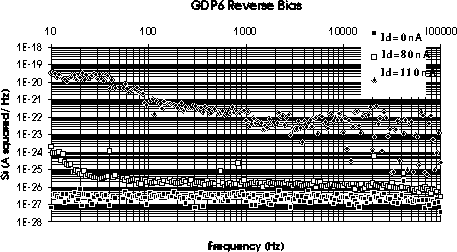
Figure 7: Noise spectra of the small GaAs diode for leakage currents of 0, 80 and
110nA.
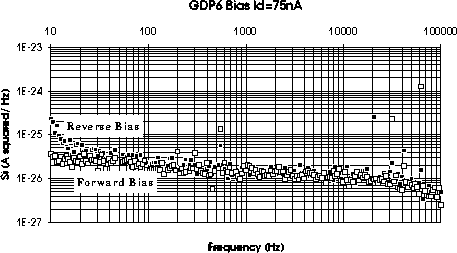
Figure 8: Noise spectra of the small GaAs diode in reverse and forward bias.
Noise spectra for the forward biased diode are similar to those obtained in reverse bias as shown in figure 8. The white noise component is approximately the same, the high frequency corner is present, but no low frequency excess noise is present in the forward biased case. The reason why no excess noise is seen for the forward biased diode is not clear.